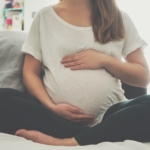We have seen an increasing number of women of reproductive age treated with the newer atypical antipsychotic agents, and more women seek consultations regarding the reproductive safety of these newer medications. Over the last couple of years, we have seen a series of studies assessing the reproductive safety of this class of medications. However, we have very little information on the long-term effects of prenatal exposure to antipsychotic medications.
In a population-based cohort study, children born between 2001 and 2015 were identified using the Hong Kong Clinical Data Analysis and Reporting System and were followed to at least three years of age. Children exposed prenatally to maternal antidepressant or lithium were excluded.
The researchers assessed the following outcomes: preterm birth (<37 gestational weeks), small for gestational age (SGA, birth weight <2 standard deviations below the mean for gestational age), diagnosis of attention-deficit/hyperactivity disorder (ADHD), and diagnosis of autism spectrum disorder (ASD) in children.
Outcomes were compared in children with and without prenatal exposure to antipsychotic medications. Among children with exposure to antipsychotics, there was a small increase in risk for preterm birth but not for SGA; the weighted odds ratios (wOR) were 1.40 (95% CI, 1.13-1.75) for preterm birth and 1.36 (95% CI, 0.86-2.14) for SGA. However, subsequent analyses showed no association between exposure and preterm birth when comparing prenatally exposed children to those born to mothers with past exposure (wOR, 0.93; 95% CI, 0.70-1.24).
In this cohort, 3.95% of the children (followed until at least six years of age) had a diagnosis of ADHD, and 2.12% (followed until at least three years of age) had a diagnosis of ASD. Prenatal exposure to an antipsychotic medication was not associated with an increased risk of ADHD (wHR, 0.99; 95% CI, 0.60-1.61) or ASD (wHR, 1.10; 95% CI, 0.58-2.08).
Taking a Closer Look at the Limitations of This Study
The findings of this study do not suggest that prenatal antipsychotics exposure is associated with increased risk for ADHD, ASD, small for gestational age, or preterm birth. To date, we have very little information on the long-term effects of prenatal exposure to antipsychotic medications. While these findings are reassuring, it is important to carefully consider some of the limitations of the study.
First, it is important to consider the type of antipsychotic medications used by the patients in this cohort. The numbers of patients analyzed for each outcome vary slightly, but it looks as if roughly 57% of the patients used first generation antipsychotic medications, 29% used second generation antipsychotics, and the remaining 14% used both. Thus, the population followed in this study varies considerably from the patients we see in the United States, where women of childbearing age are more likely to be taking the newer, second generation antipsychotic medications. Thus, we may not be able to generalize these findings to other populations of women with higher use of second generation antipsychotic medications.
Second, the authors elected to exclude women taking antidepressant medications and lithium. While this decision makes sense in terms of distinguishing the effects of prenatal exposure to antipsychotic medications from other exposures, it leaves me with some questions with regard to the patient population being analyzed in this cohort study. In the National Registry for Psychiatric Medications, women taking antipsychotic medications typically have recurrent major depression or bipolar disorder, and the majority of these women are taking antipsychotic medications in combination with other psychotropic medications, most commonly antidepressants and mood stabilizers. We see very few women taking only antipsychotic medication. Also notable is the finding that, in the Hong Kong cohort, only 72% of the women have a psychiatric diagnosis documented in the chart. Does this study consist primarily of women with a primary psychotic disorder, or are these women taking antipsychotic medications to treat another condition, such as a movement disorder? This is an important question given that the underlying illness may affect outcomes.
Finally, it is possible that this study design, relying on diagnoses documented in the medical record, may underestimate the overall prevalence of ADHD and ASD. The authors note that children with more severe ADHD or ASD may be seen by outside providers and not included in this database. On the other end of the spectrum, children with milder symptoms, especially those who are younger, may not receive clinical attention.
Further information on the long-term effects of prenatal exposure to antipsychotic medications is clearly needed, especially given the widespread use of this medication. My hope is that a similar study will be conducted using the Swedish medical registers or the Medicaid Extract, so that we can see if these findings hold true in other populations.
The National Pregnancy Registry for Atypical Antipsychotics is dedicated to evaluating the safety of atypical antipsychotic medications that may be taken by women during pregnancy. The goal of this Registry is to gather information on the safety of these medications during pregnancy, as current data is inconclusive. CALL TOLL-FREE to learn more: 1-866-961-2388.
Ruta Nonacs, MD PhD
Wang Z, Chan AYL, Coghill D, Ip P, Lau WCY, Simonoff E, Brauer R, Wei L, Wong ICK, Man KKC. Association Between Prenatal Exposure to Antipsychotics and Attention-Deficit/Hyperactivity Disorder, Autism Spectrum Disorder, Preterm Birth, and Small for Gestational Age. JAMA Intern Med. 2021 Aug 16.








Leave A Comment